Monanthes plants are known for their unique and charming appearance, making them a popular choice among succulent enthusiasts. These small and compact plants form tight rosettes of fleshy leaves, creating a visually appealing display in your garden or indoor space. The leaves of Monanthes plants are typically green or gray-green in color and have a thick, waxy coating that gives them a glossy appearance. This coating not only adds to the plant’s beauty but also helps to retain moisture, allowing the plant to thrive in arid conditions.
Appearance of Monanthes Plants
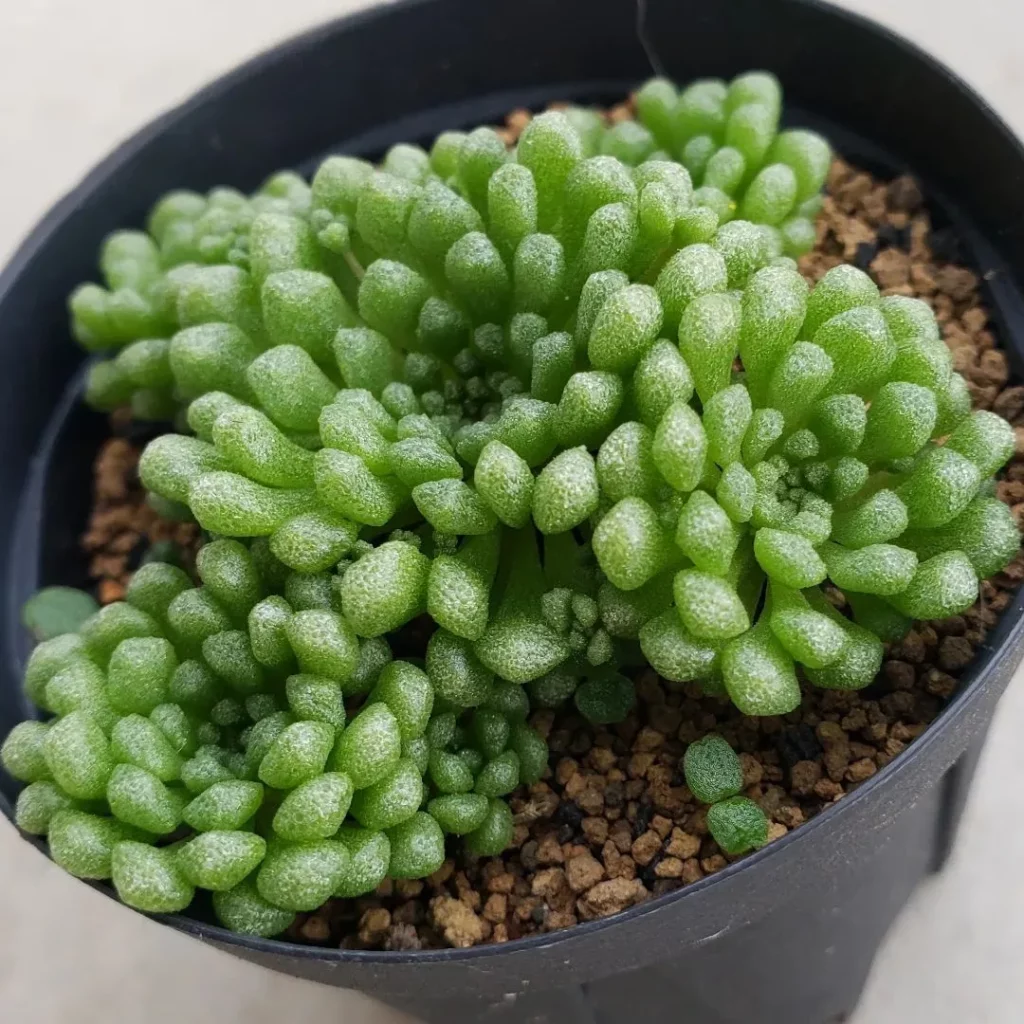

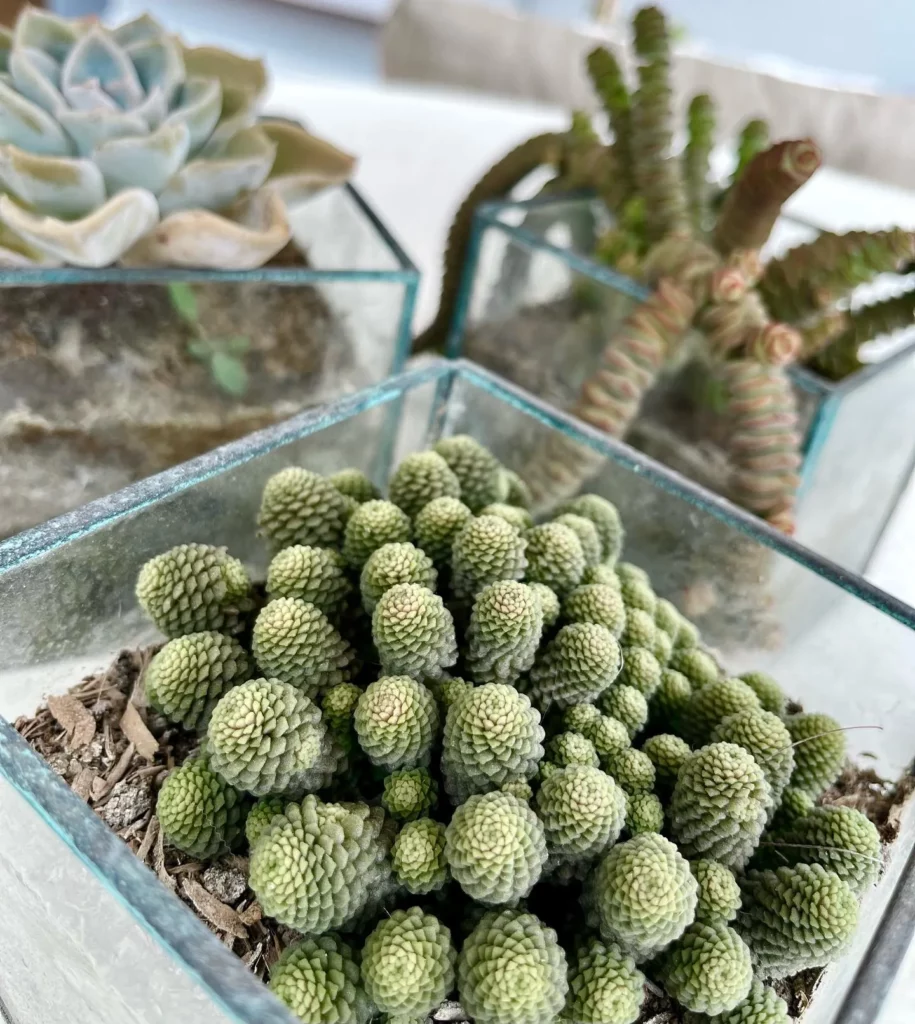
In addition to their attractive foliage, Monanthes plants produce delicate bell-shaped flowers that add a touch of elegance to their overall appearance. These small flowers come in a variety of colors, ranging from pristine white to soft shades of pink and purple. The bell-shaped flowers not only enhance the aesthetic appeal of the plant but also attract pollinators like bees and butterflies, making them a delightful addition to any garden.
Whether you choose to grow Monanthes plants indoors or outdoors, their distinctive appearance is sure to captivate your attention and bring a sense of natural beauty to your surroundings.
Light Requirements for Monanthes Plants

Proper lighting is crucial for the health and growth of Monanthes plants. These succulents prefer bright, indirect light to thrive. While they can tolerate some direct sunlight, too much exposure can cause the leaves to burn. Therefore, it’s essential to find the right balance.
If you choose to grow your Monanthes plant indoors, place it near a south-facing or west-facing window. These directions typically provide sufficient light for the plant’s needs. If your windowsill doesn’t receive intense sunlight, you can also consider using artificial grow lights to supplement the light requirements.
For outdoor cultivation, find a location that receives bright, filtered light. This ensures that the plants receive the necessary light without being exposed to direct sunlight for extended periods.
No products found.
Watering Monanthes Plants
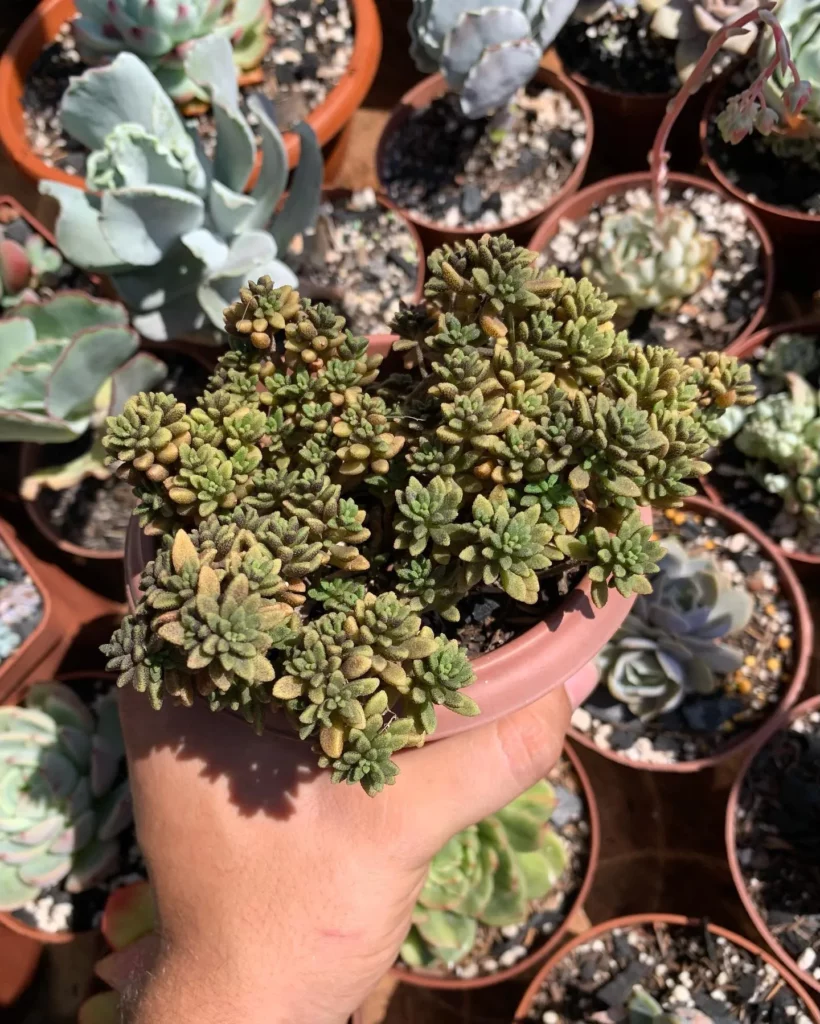

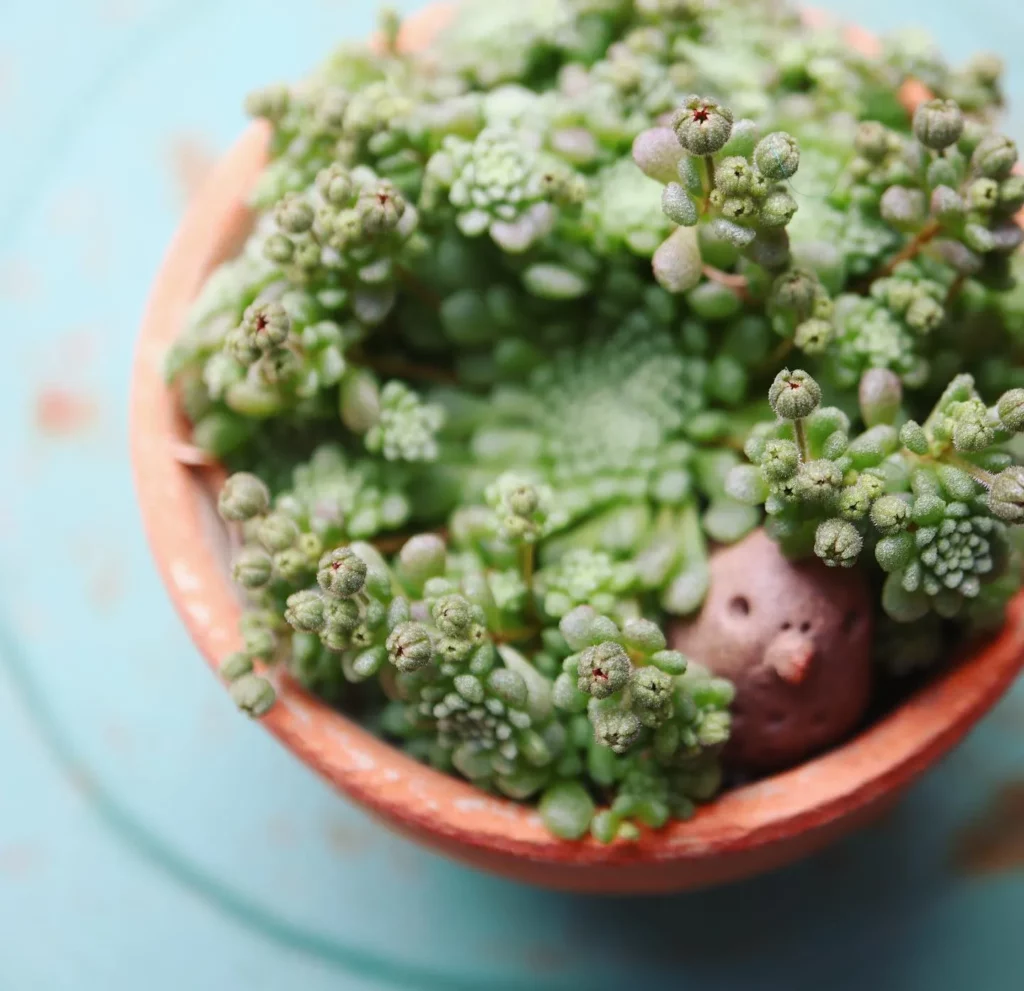
Proper watering is crucial for the health and well-being of your Monanthes plants. These succulents are susceptible to root rot, so it’s important to avoid overwatering. Follow these succulent watering tips to keep your Monanthes plants thriving:
- Allow the soil to dry out: Before watering your Monanthes plants, make sure the top inch of soil is completely dry. This will prevent water from pooling around the roots and causing rot.
- Watering frequency: During the growing season (spring and summer), water your Monanthes plants once every 1-2 weeks. This will provide them with enough moisture to support their active growth.
- Reduce watering in the dormant season: In the fall and winter, when Monanthes plants are in their dormant phase, reduce watering to once every 2-4 weeks. The reduced moisture will mimic their natural environment and prevent overwatering.
- Pay attention to environmental factors: Factors like temperature and humidity can affect the watering needs of your Monanthes plants. Adjust your watering schedule accordingly, especially during hot and dry periods.
- Use the right watering technique: When watering your Monanthes plants, aim to thoroughly saturate the soil until water comes out of the drainage holes. This ensures that the entire root system receives moisture.
Fertilizing Monanthes Plants

Proper fertilizing is essential to ensure the healthy growth and development of your Monanthes plants. While they do not require frequent fertilizing, providing them with a balanced succulent fertilizer during the growing season can support their overall health and vitality.
1. Choosing the right fertilizer
When selecting a fertilizer for your Monanthes plants, opt for a diluted succulent or cactus fertilizer. These specialized formulas provide the necessary nutrients while avoiding the risk of over-fertilization.
2. Application frequency
During the active growing season, which typically spans spring and summer, feed your Monanthes plants with a diluted fertilizer once a month. This allows them to receive the necessary nutrients without becoming overwhelmed.
3. Proper dilution and application
Always follow the instructions on the fertilizer packaging for proper dilution and application. Mix the fertilizer with water according to the recommended ratio and apply it to the soil around the base of your Monanthes plants. Avoid direct contact with the leaves to prevent potential damage.
4. Timing is crucial
It’s important to avoid fertilizing your Monanthes plants during their dormant season, which typically occurs in the fall and winter. The reduced growth and metabolic activity during this period make fertilization unnecessary and could even harm the plants.
5. Monitoring plant response
Observe how your Monanthes plants respond to the fertilizer. If they show signs of overfertilization, such as leaf discoloration or wilting, reduce the frequency or strength of the fertilization. Conversely, if the plants appear pale or show slow growth, you may consider increasing the frequency slightly.
- Choose a diluted succulent or cactus fertilizer
- Apply the fertilizer once a month during the active growing season
- Follow the instructions for proper dilution and application
- Avoid fertilizing during the dormant season
- Monitor the plant’s response and adjust accordingly
Potting Monanthes Plants
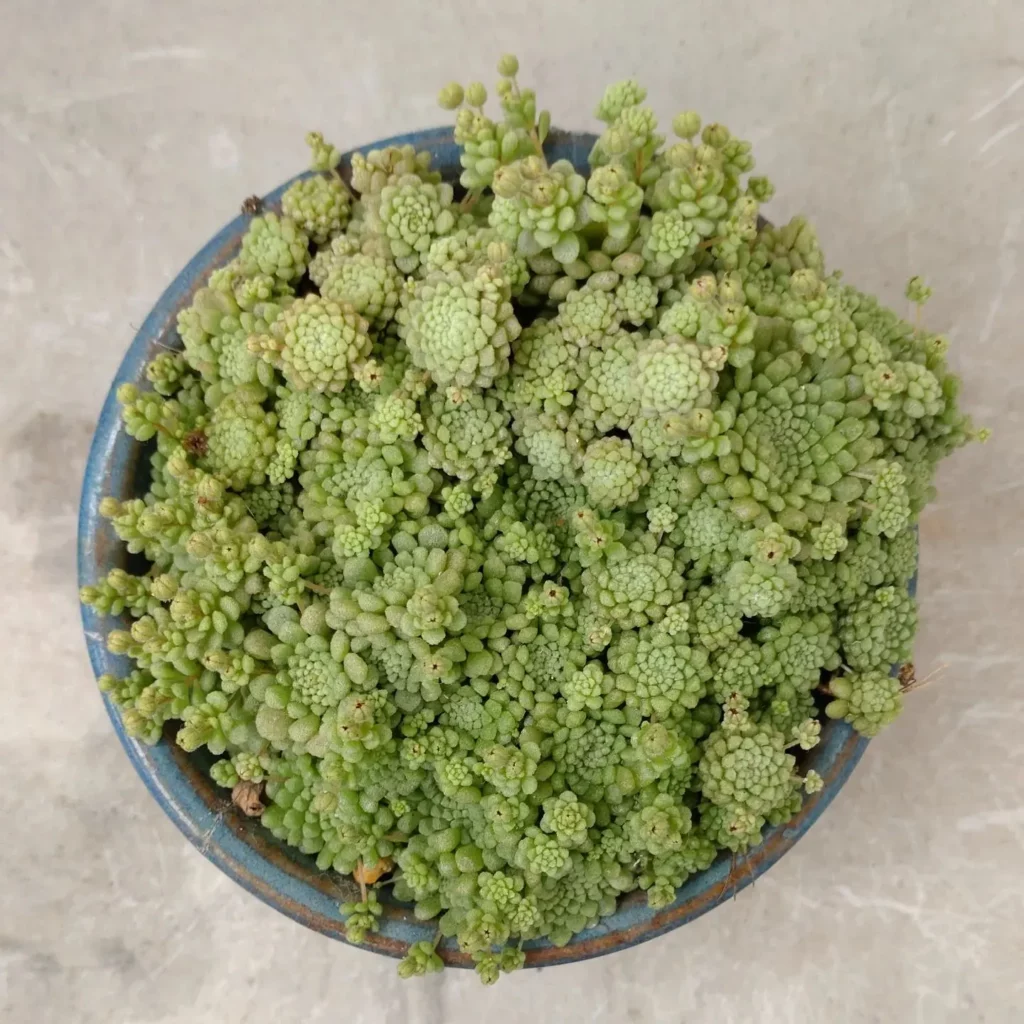


When potting Monanthes plants, it is crucial to use a well-draining soil mix. The right choice for Monanthes plants is a cactus or succulent mix, which will provide the necessary drainage to prevent waterlogging. It is essential to ensure that the pot used for potting has drainage holes to allow excess water to escape.
Repotting may be necessary every 1-2 years to provide fresh soil and adequate space for plant growth. It allows the roots to expand and promotes healthier plant development. When repotting, gently remove the plant from its current container and inspect the roots for any signs of damage or rot.
No products found.
If you notice any issues, carefully trim away any damaged roots before transferring the plant to a larger pot. Fill the new pot with fresh succulent potting mix, ensuring that the plant sits at the same level as before. Press the soil gently around the roots to secure the plant in place.
Propagation of Monanthes Plants
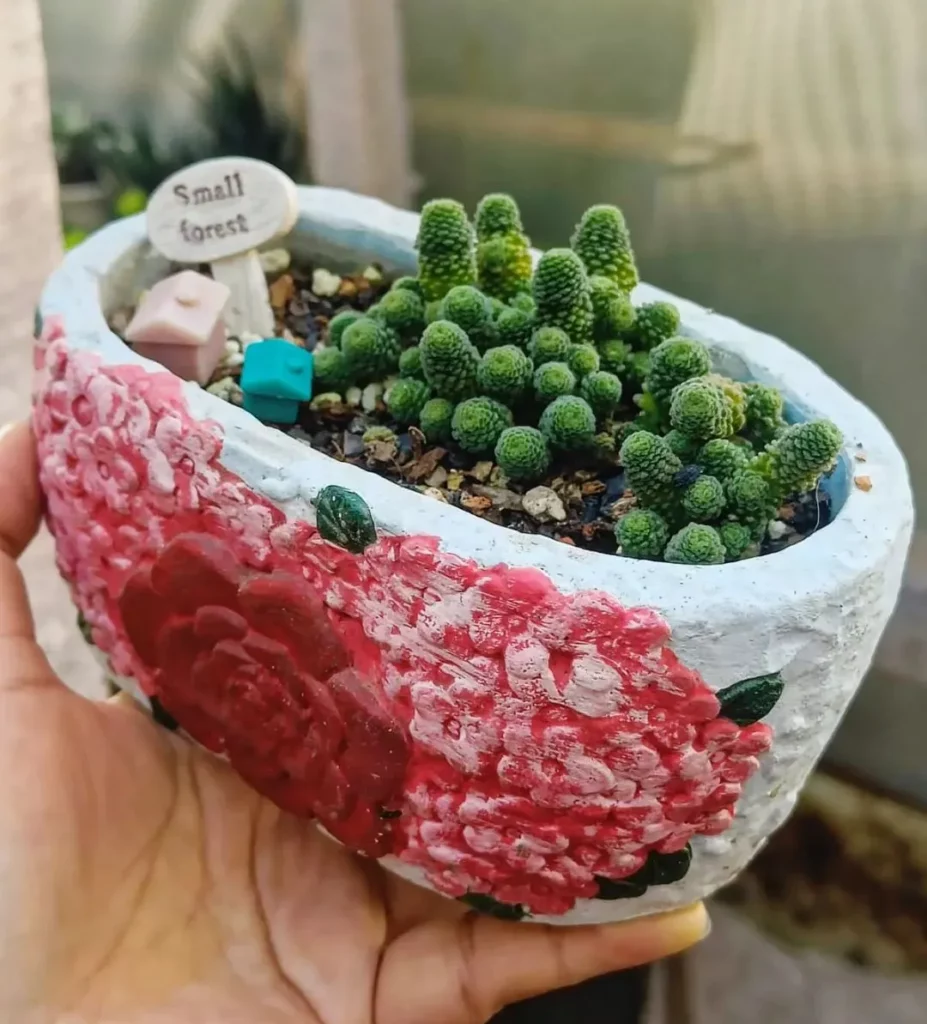
If you want to expand your collection of Monanthes succulents or share their beauty with your friends and family, propagation is a simple and rewarding method. Monanthes plants can be easily propagated through stem or leaf cuttings, allowing you to grow new plants from the original ones.
Stem Cuttings: To propagate Monanthes through stem cuttings, start by selecting a healthy stem from the parent plant. Using a clean and sharp pair of scissors or pruners, cut the stem at a 45-degree angle. Then, allow the cut end to dry and callus for a few days.
- Prepare a well-draining soil mix using cactus or succulent soil.
- Make a small hole in the soil and plant the callused end of the stem into the hole, ensuring that at least one node is buried in the soil.
- Gently pat the soil around the cutting to secure it in place.
- Water the soil lightly, making sure not to overwater.
Leaf Cuttings: Leaf cuttings are another effective way to propagate Monanthes plants.
- Gently remove a healthy leaf from the parent plant by firmly grasping the base and wiggling it back and forth until it detaches.
- Place the leaf on top of well-draining soil, making sure that the end of the leaf is in contact with the soil.
- Mist the leaf lightly with water to create a humid environment.
- Wait for the leaf to develop roots and a new plantlet.
Growth and Development of Monanthes Plants
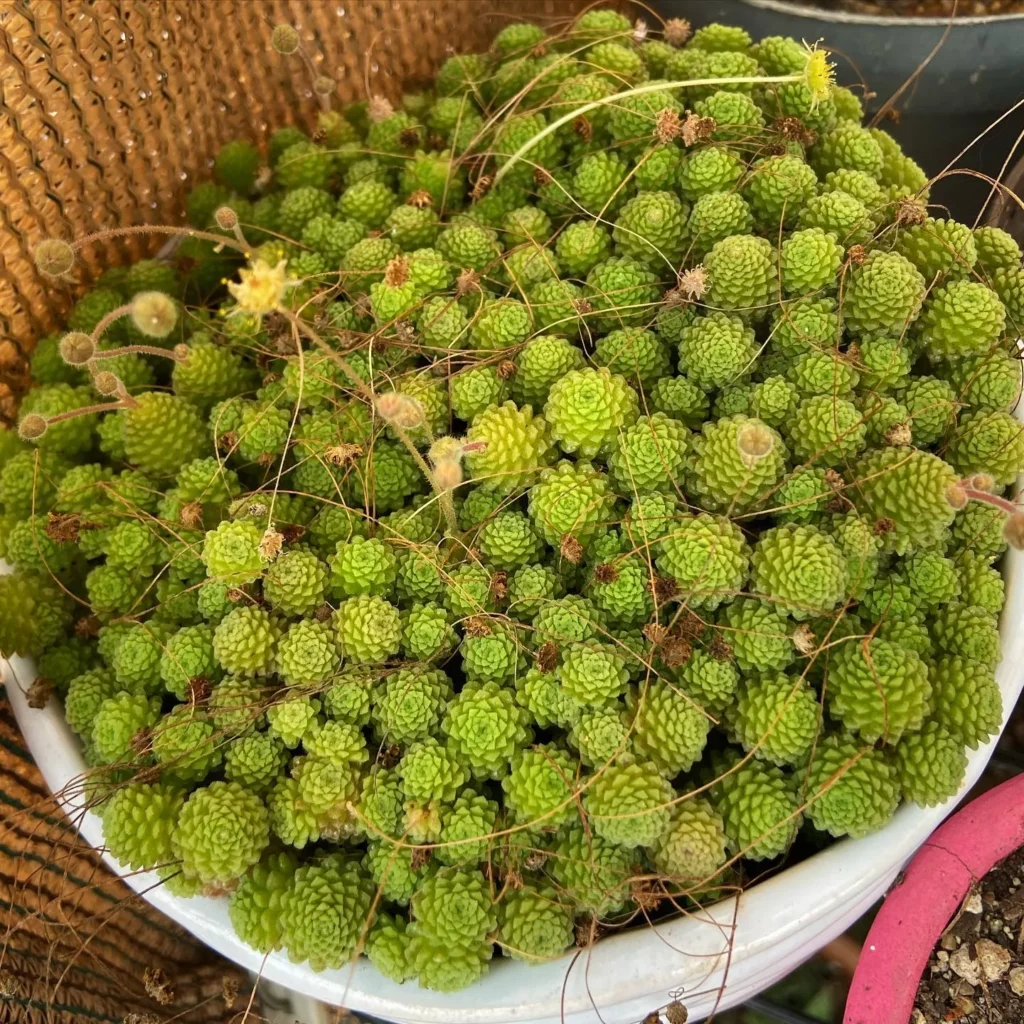

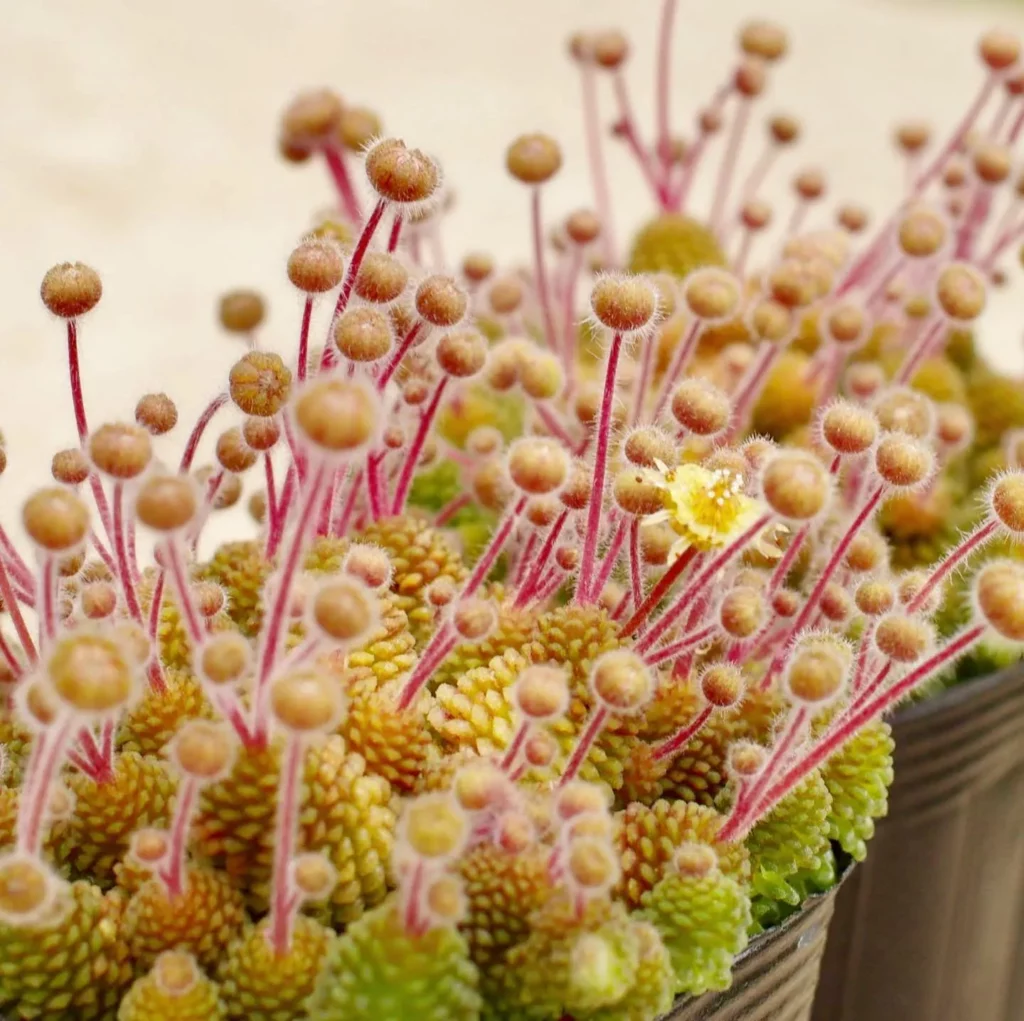
Monanthes plants are known for their slow to moderate growth rate. With proper care and optimal growing conditions, these succulents have the potential to grow larger rosettes and produce more flowers over time. To support the growth and development of your Monanthes plants, it is crucial to provide them with the right amount of light, water, and nutrients.
- Light: Monanthes plants require bright, indirect light. Place them near a south-facing or west-facing window if grown indoors, or in an area that receives bright, filtered light if grown outdoors.
- Water: Avoid overwatering Monanthes plants to prevent root rot. Allow the soil to dry out between waterings, and water only when the top inch of soil is completely dry. During the growing season (spring and summer), water more frequently, about once every 1-2 weeks. Reduce watering to once every 2-4 weeks during the dormant season (fall and winter).
- Nutrients: While Monanthes plants do not require frequent fertilizing, you can feed them with a diluted succulent or cactus fertilizer once a month during the growing season. Follow the instructions on the fertilizer packaging for proper dilution and application. Avoid fertilizing during the dormant season.
Pests and Diseases Affecting Monanthes Plants

While Monanthes plants are generally resistant to many pests and diseases, it is important to be aware of common succulent pests that can still affect them. Two common pests to watch out for are mealybugs and spider mites.
Regularly inspect your Monanthes plants for signs of infestation, such as webbing, sticky residue, or yellowing leaves. If you notice any of these symptoms, it is crucial to take action promptly.
Treating the infestation can be done using organic pest control methods or insecticidal soap. These options are effective at eliminating pests without causing harm to the plant or the environment.
In addition, proper watering and drainage are essential to prevent fungal diseases, such as root rot. Overwatering can create the perfect conditions for these diseases to thrive. To avoid this, ensure that you provide your Monanthes plants with adequate water and proper drainage.
FAQ
How many species of Monanthes are there?
There are over 40 different species of Monanthes.
What is the appearance of Monanthes plants?
Monanthes plants have small, fleshy leaves that grow in tight rosettes. The leaves are usually green or gray-green in color and have a thick, waxy coating. They also produce delicate, bell-shaped flowers in colors ranging from white to pink and purple.
What are the light requirements for Monanthes plants?
Monanthes plants prefer bright, indirect light. They can tolerate some direct sunlight, but too much can cause the leaves to burn. If grown indoors, place your Monanthes plant near a south-facing or west-facing window to provide it with sufficient light. If growing outdoors, place them in an area that receives bright, filtered light.
How should I water my Monanthes plants?
It’s important to avoid overwatering Monanthes plants to prevent root rot. Allow the soil to dry out between waterings, and only water when the top inch of soil is completely dry. During the growing season (spring and summer), water more frequently, about once every 1-2 weeks. In the dormant season (fall and winter), reduce watering to once every 2-4 weeks.
How often should I fertilize my Monanthes plants?
Monanthes plants do not require frequent fertilizing. During the growing season, you can feed them with a diluted succulent or cactus fertilizer once a month. Be sure to follow the instructions on the fertilizer packaging for proper dilution and application. Avoid fertilizing during the dormant season.
What type of soil should I use when potting Monanthes plants?
It is crucial to use a well-draining soil mix when potting Monanthes plants. A cactus or succulent mix is ideal. Ensure that the pot has drainage holes to prevent waterlogging. Repotting may be necessary every 1-2 years to provide fresh soil and adequate space for plant growth.
How can I propagate Monanthes plants?
Monanthes plants can be easily propagated through stem or leaf cuttings. Stem cuttings can be taken by cutting a healthy stem and allowing it to callus for a few days before planting it in well-draining soil. Leaf cuttings can be taken by gently removing a leaf from the plant and placing it on top of the soil, making sure the end of the leaf is in contact with the soil. Rooting hormone can be used to promote root growth in both methods.
How fast do Monanthes plants grow?
Monanthes plants typically have a slow to moderate growth rate. With proper care and optimal growing conditions, they can grow larger rosettes and produce more flowers over time. Providing the right amount of light, water, and nutrients will support their growth and development.
Are Monanthes plants susceptible to pests and diseases?
While Monanthes plants are generally resistant to pests and diseases, they can still be affected by common succulent pests such as mealybugs and spider mites. Regularly inspect your plants for signs of infestation, such as webbing, sticky residue, or yellowing leaves. Treat any infestation with organic pest control methods or insecticidal soap. Overwatering can also lead to root rot and other fungal diseases, so proper watering and drainage are crucial to prevent these issues.




